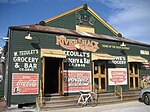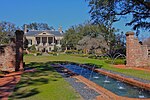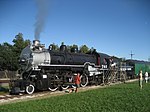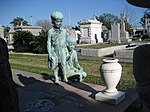Haynes Academy for Advanced Studies
Haynes Academy for Advanced Studies is a Magnet School in the Jefferson Parish School District in Metairie, Louisiana. Haynes has been designated a Five Star School by the Louisiana State education agency. The Haynes Academy is named after Vernon C. Haynes, a former principal of the school. Offering a vast majority of clubs and Honor Societies, Haynes educates the next generations. Haynes is a nationally acclaimed school in Academic Games, led by their head coach, Mrs. Gamble, creating a dynasty that has lasted for nearly a decade. Haynes is the current Louisiana Quiz Bowl State Champion, Mission Ignition champions, and Louisiana Key Club Lieutenant Governor. Through its diverse curriculum, Haynes provides students with the keys to their education, setting up their future careers. Recently, Haynes was recognized as a trailblazer in securing new software and IBCs in the Jefferson Parish.
Excerpt from the Wikipedia article Haynes Academy for Advanced Studies (License: CC BY-SA 3.0, Authors).Haynes Academy for Advanced Studies
Metairie Road,
Geographical coordinates (GPS) Address Nearby Places Show on map
Geographical coordinates (GPS)
| Latitude | Longitude |
|---|---|
| N 29.986944444444 ° | E -90.139166666667 ° |
Address
Metairie Road 1416
70005
Louisiana, United States
Open on Google Maps









